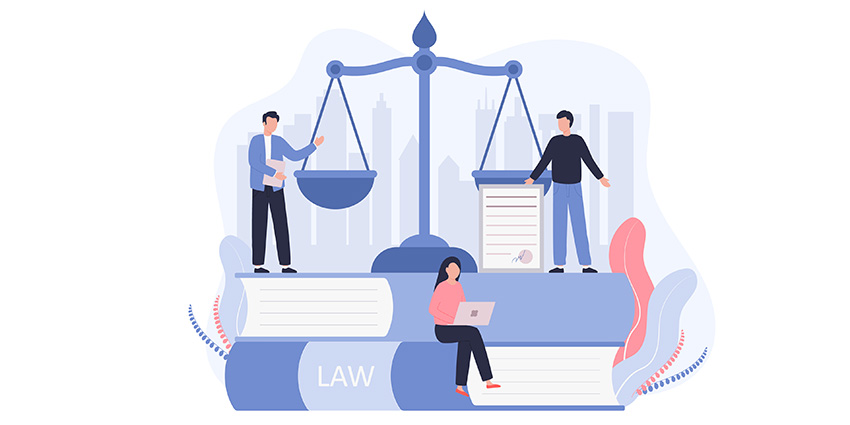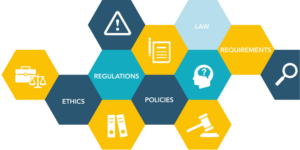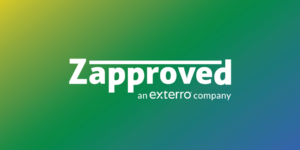
The Federal Rules of Civil Procedure (FRCP) provide detailed guidelines for civil litigation “to secure the just, speedy, and inexpensive determination of every action and proceeding.” It’s important governance for all corporate legal teams, and there are several specific provisions in the FRCP that have a huge impact on ediscovery.
In this post, we’ll be looking at a few of the most salient aspects of Rule 26, which helps provide working parameters for the scope of discovery. We’ll focus on those sections of the rule that deal with proportionality, guidelines for the “meet and confer” sessions between plaintiffs and defendants, and expectations for finalized discovery plans.
What is Proportionality in Rule 26(b)(1)?
As it pertains to ediscovery, proportionality represents a global cost-benefit analysis, whereby the court considers the needs of the case and weighs the importance of information against the burden of producing it.
The intent of proportionality is to guard against costly over-discovery. Prior to the 2015 rule amendments, Rule 26(b)(1) did not specifically impose a proportionality limit on the scope of discovery. But the explosion in the amount of electronically stored information (ESI) available to parties, out-of-control ediscovery costs threatened to overwhelm many cases. One of the primary purposes of the 2015 rule amendments was to acknowledge that dilemma and curtail it. Proportionality is therefore a very intentional means of restricting overreaching ediscovery.
But what determines proportionality? Rule 26(b)(1) spells out six specific factors that courts should weigh in making a proportionality ruling. They are:
- Importance of the issues at stake in the action
- Amount in controversy
- Parties’ relative access to relevant information
- Parties’ resources
- Importance of the discovery in resolving the issues
- Whether the burden or expense of the proposed discovery outweighs its likely benefit
These factors clearly include both monetary and non-monetary considerations. For example, requested information may be expensive to produce but important for determining the core issue in a case. If the requesting party otherwise has no ability to access that information and the objecting party has adequate resources, the court is quite likely to order its production.
On the other hand, a party may request a burdensome production when the same information can be gleaned from another, less costly source. There, the court is likely not to require the objecting party to produce it. In that event, the specific information sought is not important to resolving the issues because it is cumulative or redundant.
The party requesting discovery must establish that the information sought is relevant and important to the litigation. Once that hurdle has been overcome, the party objecting on proportionality grounds must establish that the burden or expense of producing information outweighs its benefit. For this, more than mere speculation is needed. Parties must present hard information, perhaps from analysis of a sample set, to demonstrate the cost of production or the unimportance of data.
Parties are encouraged to leverage technology to limit the cost of discovery and ease proportionality concerns. Additionally, where possible, parties should obtain discovery from the most convenient and least burdensome sources.
What Are the Meet and Confer and Discovery-Plan Requirements of Rule 26(f)?
Beyond helping to define the scope of a civil matter, Rule 26 also establishes guidelines for pre-trial meetings between two sides in litigation. Per Rule 26(f), parties must conduct these meet and confer sessions “as soon as practicable—and in any event at least 21 days before a scheduling conference is to be held or a scheduling order is due.”
In addition to setting a timeline for this conference, Rule 26(f)(2) also details the responsibilities and outcomes for the meeting. Parties must:
- Consider the nature and basis of their claims and defenses and the possibility for promptly settling or resolving the case
- Make or arrange for the disclosures required by Rule 26(a)(1)
- Discuss any issues about preserving discoverable information
- Develop a proposed discovery plan
This last point, in particular, leaps off the page for ediscovery teams. If your company faces litigation, the particulars of the discovery plan will go a long way toward determining your strategic approach to ediscovery. A discovery plan that adheres to Rule 26 includes both parties’ “views and proposals” on:
- What changes should be made in the timing, form, or requirement for disclosure under Rule 26(a), including a statement of when initial disclosures were made or will be made
- The subjects on which discovery may be needed, when discovery should be completed, and whether discovery should be conducted in phases or limited to or focused on particular issues
- Any issues about disclosure, discovery, or preservation of electronically stored information, including the form or forms in which it should be produced
- Any issues about claims of privilege or of protection as trial-preparation materials, including—if the parties agree on a procedure to assert these claims after production—whether to ask the court to include their agreement in an order under Federal Rule of Evidence 502
- What changes should be made in the limitation on discovery imposed under these rules or by local rule, and what other limitations should be imposed
- Any other orders that the court should issue under Rule 26(c) or under Rule 16(b) and (c)
How Can Ediscovery Teams Use Rule 26 to prepare for litigation?
It’s extremely helpful to understand clearly what’s expected of your in-house legal team as you prepare for the possibility of litigation. Some aspects of Rule 26 or open to interpretation, and it’s likely that your conference with opposing counsel will be a negotiation where both sides state a case. You have to be ready, not just to comply with FRCP guidelines, but to also negotiate a fair set of procedures. Here’s a few things to consider as you prep:
Understand Your Data
To make a strong case for favorable proportionality and to establish acceptable parameters for discovery plans, you must go into your conference with a thorough understanding of the data within your ecosystem. This entails:
- Working with your Information Governance team to understand where your data resides, what form it exists in, what data ranges might be germane to the case, what custodians may be impacted, and how difficult this data is to extract
- Conduct initial custodian interviews to uncover any data sources you may have overlooked or that aren’t documented
- Understanding data retention/deletion policies that may need to be suspended in the event that preservation is necessary; existing policy may also help you make a case for or against proportionality if requested data is onerous to produce
Build Strong Collaboration Across Business Units
Given the time constraints that Rule 26 places on meet and confer sessions, it’s important to coordinate with relevant partners across the business in advance to ensure they understand their responsibilities. These teams include:
- Information Technology—Your ediscovery team should be in constant communication with IT before the conference so they can help you understand your data, identify any challenges you may encounter in preservation, and help you reduce data volumes by identifying duplicate data
- Human Resources—HR can keep you updated on the employment status for any potential custodians related to the matter
- Security and Privacy—These teams can help you identify any sensitive information that may require extra protection during ediscovery; they can also point out any personal data that may be privileged or protected under privacy regulations
- In-House Legal—That’s you! Make sure you have the right internal resources to dedicate to the matter, and empower your teams with the right tools, metrics, and reporting to work effectively
Have the Right Tools
Ediscovery software can be a huge advantage in aligning teams across your business, supporting strong Information Governance practices, and streamlining internal communications and collaboration. An ediscovery platform like Zapproved’s ZDiscovery helps you achieve these goals with:
- Automation across the legal hold process so you can get started on determining the scope of ediscovery right away
- Automated Custodian Workflows triggered by changes in employment, so you have a way to keep track of every custodian
- A single interface for your legal team, saving time and allowing you to hold historical information that could create efficiencies in future matters
The ability to preserve in place, so you can begin your hold process quickly without duplicating data and increasing storage or review costs




